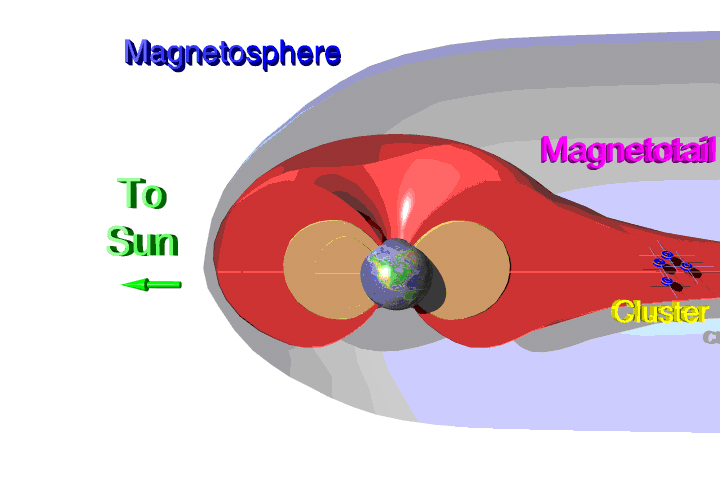Space 'Tsunamis' Found Near Earth

New satellitedata are providing insights into space "tsunamis" that disrupt the northernlights and result in auroral dances in the sky.
Generallyseen in high-latitude regions, auroraeare colorful light curtains in the sky, caused by high-energy particlesthat are carried on the solar wind and interact with Earth's magnetic field.
Early inthe evening, the aurora often forms a motionless green arc stretching acrossthe sky in an east-west direction. Colorful dancing auroral forms result fromdisturbances known as "substorms" or space tsunamis in Earth'smagnetosphere, a droplet-shaped magnetic bubble created when the solar winddistorts Earth's magnetic field.
Thesesubstorms typically last one to two hours, and are three-dimensional physicalphenomena spread across distances ranging from 62,000 to 93,000 miles.
Understandingsuch complex physical processes using a single scientific spacecraft would be liketrying to predict the behavior of a tsunami with a single ocean buoy,necessitating the simultaneous use of several satellites like theCluster constellation.
Currently,two competing theoretical models describe these space tsunamis, the "Current-Disruption"model and the "Near Earth Neutral Line Model." Using Clusterspacecraft data, scientists confirmed that the behavior of some substorms isconsistent with the Current Disruption model.
Study ofone of the stages of a substorm helps determine which model applies. Forexample, in the late stage of substorm development, auroral disturbances movetowards the poles, suggesting that the energy source for auroras and substormsmoves away from Earth.
Get the Space.com Newsletter
Breaking space news, the latest updates on rocket launches, skywatching events and more!
Previoussatellite observations have found that, during this late stage, the plasma orsuperhot gas flows in the the tails of the magnetosphere exhibit a reversal indirection. In recent years it was generally thought that a flow reversal regionis where magnetic reconnection takes place, where the magnetic field's energy isconverted into particle energy (dissipation effect), resulting in high-speedplasma flows hurtling towards Earth, like space tsunamis.
Tony Lui, ascientist at John Hopkins University analyzed Cluster satellite data measured whilecrossing such a region in the magnetotail, where flows of plasma reversedirection. Owing to Cluster's ability to perform simultaneous multipointmeasurements, the scientists were able to mathematically describe some energy movementthere that had never before been estimated for such a flow reversal region.
Bycomparing the directions of the electric current and the electric field in themagnetosphere, it is possible to understand whether the flow reversal is adissipation effect (where magnetic field energy converted to particle energy)or a dynamo effect (where particle energy is converted to magnetic fieldenergy). The Cluster scientists observed that features associated with flowreversal are actually very complex, consisting of both effects in localizedsites.
This resultshows that the plasma turbulence disrupts the local electric current. "Thefeatures we observed are consistent with the current disruption model,"Lui said "However, it is unclear how general these findings are."
- What'sBehind the Solar System's Biggest Light Shows
- HugeSwirls of Hot Gas Found Above Earth
- ClusterSatellites Dance In Orbit - And In Video
Join our Space Forums to keep talking space on the latest missions, night sky and more! And if you have a news tip, correction or comment, let us know at: community@space.com.

Space.com is the premier source of space exploration, innovation and astronomy news, chronicling (and celebrating) humanity's ongoing expansion across the final frontier. Originally founded in 1999, Space.com is, and always has been, the passion of writers and editors who are space fans and also trained journalists. Our current news team consists of Editor-in-Chief Tariq Malik; Editor Hanneke Weitering, Senior Space Writer Mike Wall; Senior Writer Meghan Bartels; Senior Writer Chelsea Gohd, Senior Writer Tereza Pultarova and Staff Writer Alexander Cox, focusing on e-commerce. Senior Producer Steve Spaleta oversees our space videos, with Diana Whitcroft as our Social Media Editor.









